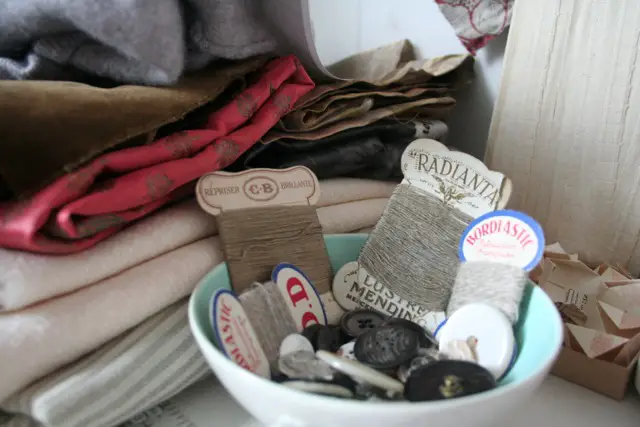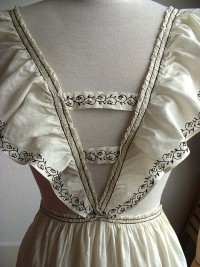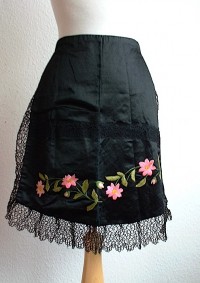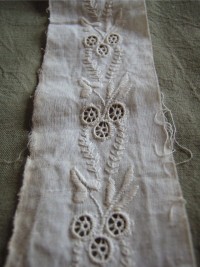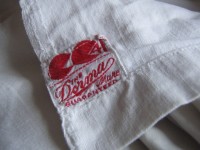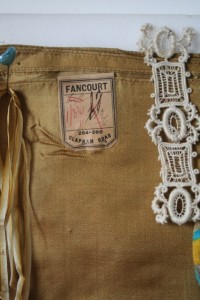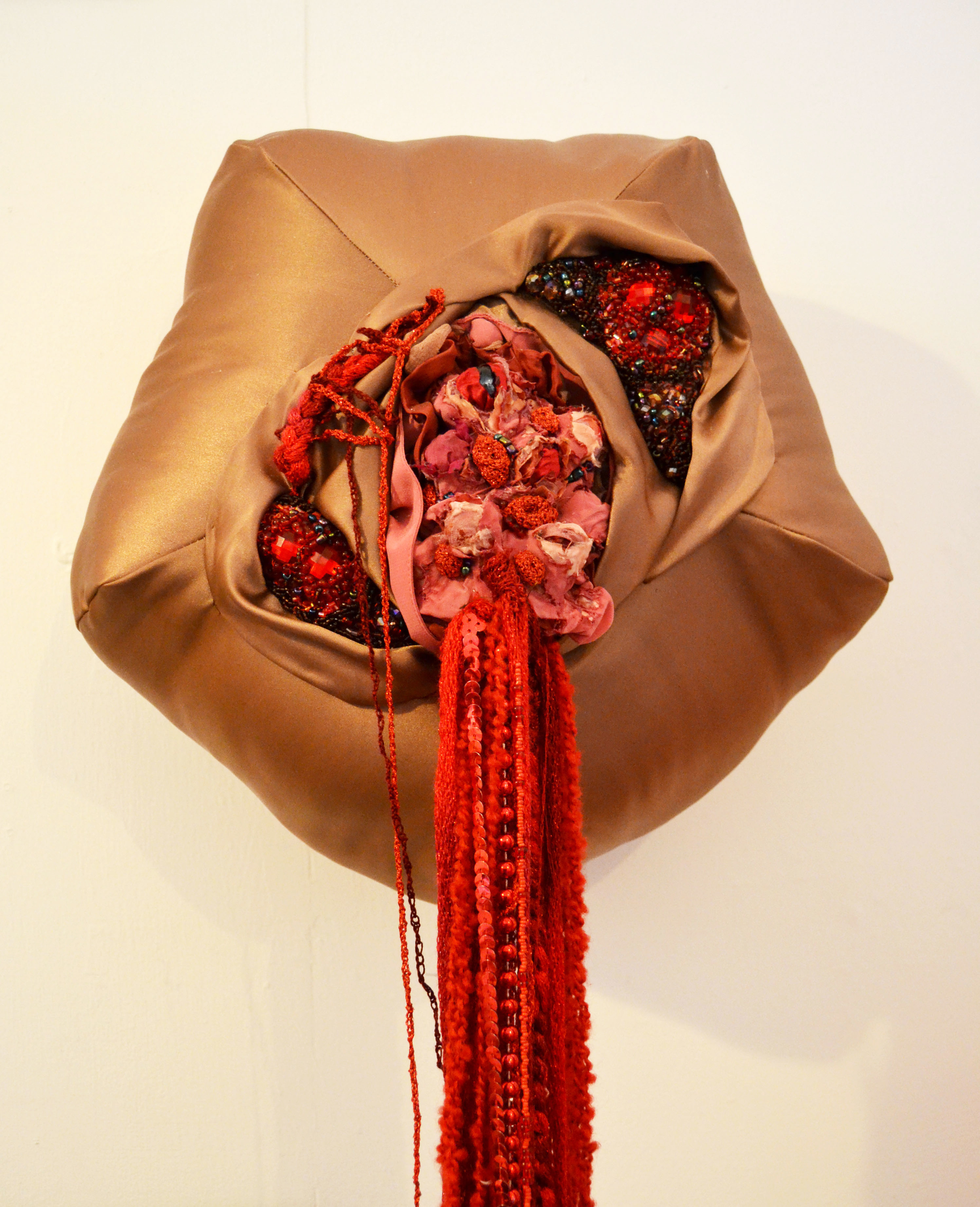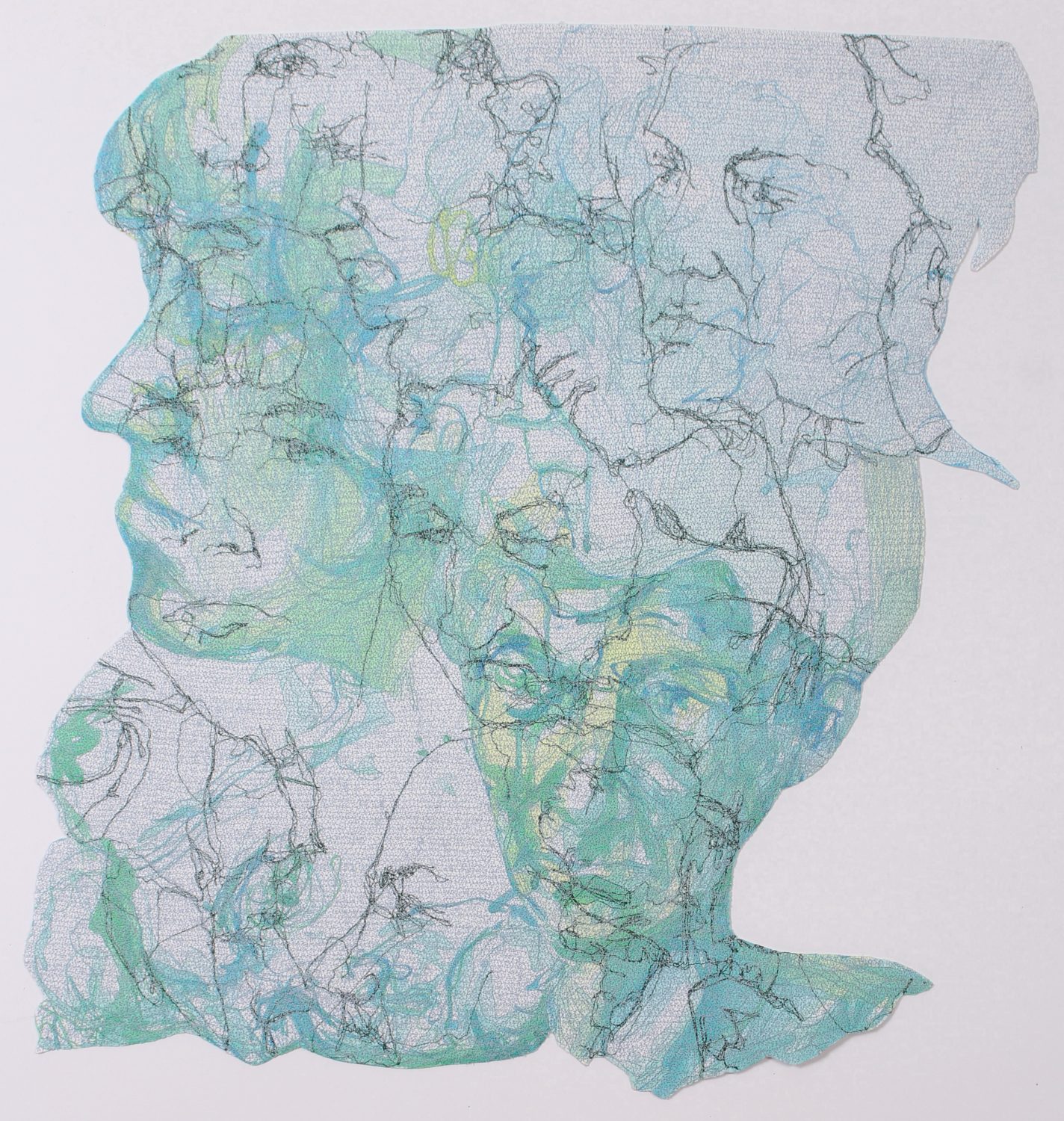Over the last 12 months, Pinning the Past has explored a range of historical and contemporary textile stories from tapestry to trapunto, and this month marks the last of these long columns. From next month, Pinning the Past will be shorter snippets, looking at individual textiles in my collection and in museums. This month’s column looks at collecting old textiles; acquiring, buying, storing and protecting our ancient fibre treasures. Like many of you, I suspect, I am unable to say no to an interesting old bit of textile. I have been acquiring bits and pieces for most of my life, and these days I accept and celebrate that it is a collection, not just an out-of-control stash. These are textile items that I love and want to keep, not ones destined to be re-used, re-made or cut up – although I have no shortage of fabrics that fall into that category too!
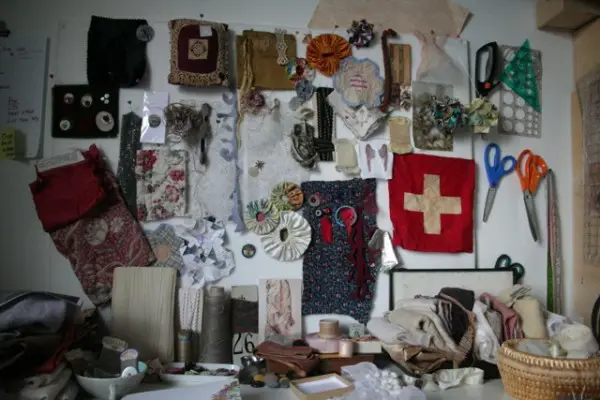
Many of us have inherited collections of historic lace, linens or other textiles from family members. Some of us are lucky enough to be given textile treasures because we are known to love and cherish them. And some of us go shopping, specifically for antique textiles. There’s nothing like the thrill of the chase through a pile of boring table linens at a car boot sale, only to find a Victorian apron in the bottom.
Personally I like pre-War textiles, ideally pre-First World War. Victorian textiles are surprisingly affordable as they aren’t as fashionable as Mid-Century curtains. Long may this continue. My preferred hunting grounds are antique fairs, auctions and vintage clothes shops, though there is always the risk you will spend hours hunting and not find much. For guaranteed success you could try one of the Textile Society’s Antique Textile Fairs where truly amazing textiles dating back to the 18th century can be found, already sorted and labelled up.
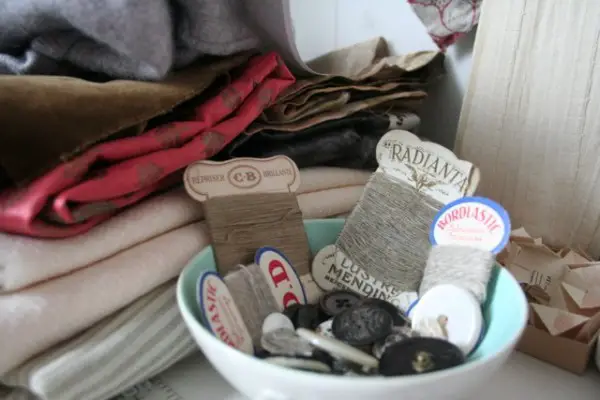
For more information about what you have found, you can try your local museum. Many museum services have a textiles curator so you could take the fabric along to one of their identification days and have them take a look, or you could try sending a good photo and description to the nearest specialist. Always try your local museum service before you go to a major institution. Auction houses can provide identification and valuation, while museums don’t give valuations. Before you buy a vintage textile piece, unfold it, hold it up to good light and use the following checklist to check for potential problems. If in doubt, don’t buy it.
- Stains
- Tears and holes
- Splits, particularly on fold lines
- Insect damage (mainly in silk and wool)
- Mothball smell (you can’t miss it!)
- Light damage, usually fading, although sometimes the colour is fast but the fabric has been irreversibly damaged by light exposure. Light damage usually degrades the fibres so the fabric appears to be disintegrating
- Water marks – where water has got onto the fabric and left a stain. This can sometimes wash out but don’t count on it.
- Rust marks (these are usually irreversible)
- Silk shatter. This is where a treatment has been applied to the silk to make it crisper, which eventually eats away at the fibres, causing the fabric to disintegrate.
Caring for your textiles
Washing
As far as possible, you shouldn’t wash antique textiles at all, unless they have obvious dirt which will attack the fibres or attract pests. Antique fabrics should never go near a washing machine – careful hand washing is vital, if it has to be washed at all. Textiles which have been exposed to the light, such as curtains, may look reasonably sturdy, but washing will destroy them entirely. If you choose to hand wash antique textiles, make sure you use a large vessel so you don’t crumple and crease the piece. Use pure soap flakes dissolved in hot water and then added to cold to make a tepid bath. Soak and gently swish the fabric, but do not rub or wring. Rinse well in cool water. Take care lifting wet fabric as it will be heavy and the weight can rip the fibres. Use a clean sieve or colander underneath and allow water to drain out. Lay the fabric out on clean towels, flat, not hanging up, and changing the towels regularly. Place the towels on a flat airer to allow air to circulate. Musty or mothball smells can be dealt with by airing the piece outside, in the shade, on a dry day. It might need a few days to get rid of the smell of mothballs. If the piece is washable, then do that and leave to dry outside.
Moths
Watch out for moths and isolate and treat IMMEDIATELY. Don’t risk getting a moth infestation in your collection, it’s soul destroying! I always check wool and silk for moths before bringing it into the house. You should look out for holes, insect casings and droppings. I would recommend never buying anything which has signs of active moth. If the item is washable, then do so. But if it is not, then try the following method; put the item in a large, zip-lock plastic bag and put in a freezer for a few days. Let it come back to room temperature before opening, then wash the item carefully or brush off the waste material and air the fabric. Moth pheromone traps attract male clothes moths so you can keep a check on any in your collections.
Storage
Antique textiles are best kept wrapped in acid-free tissue and stored in acid-free containers. Really Useful Box Company make acid-free plastic crates in a huge range of sizes, though beware that they are transparent so you should still protect your textiles from light. Other storage containers and tissue can be bought from archive specialists.
Display
Other than moth, your textiles’ worst enemy is light. UV light will damage the very fibres, beyond what you can see in fading. Always store valuable, old or precious textiles out of the light. A good picture framers will be able to create bespoke conservation-quality frames, with acid-free glues and board to help protect your pieces. Frames can also be sealed to stop insects getting in. Normal picture frame glass will not protect your textiles from light damage, so framed pieces should still be displayed out of direct light.
Above all though, antique textiles should be loved and enjoyed, so please share images of your treasures online and let us all have a look!
—–
Ruth Singer Books – Get yours from our Amazon store!
– Get yours from our Amazon store!
[column grid=”3″ span=”1″]


[/column]
[column grid=”3″ span=”1″]

[/column]
[column grid=”3″ span=”1″]

[/column]

